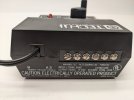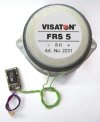Bombastic
Registered
Hi all,
I just picked up a second hand Piko BR80 and was testing it out on my layout this morning. It's a beautiful little model in pristine condition, and based on the pickups it looks to have been used a bit but not heavily. It's my first non-LGB locomotive.
However, I noticed that it runs very differently from my other locos. It runs well enough but requires nearly full power to fire up and move, and when it does move it's on the slow side. More concerning is the loud, constant hum it makes when there is power. The overall impression it gives off is that the train is barely getting enough power and the motor is straining to run.
And yet my transformer, a Tech II Locomotion 2500, works perfectly with all my LGB locomotives. None of them act this way, and I have no reason to think that there is any actual power issue.
Is this normal for a Piko locomotive? Or does this sound like there is an issue with it (or my setup)?
I just picked up a second hand Piko BR80 and was testing it out on my layout this morning. It's a beautiful little model in pristine condition, and based on the pickups it looks to have been used a bit but not heavily. It's my first non-LGB locomotive.
However, I noticed that it runs very differently from my other locos. It runs well enough but requires nearly full power to fire up and move, and when it does move it's on the slow side. More concerning is the loud, constant hum it makes when there is power. The overall impression it gives off is that the train is barely getting enough power and the motor is straining to run.
And yet my transformer, a Tech II Locomotion 2500, works perfectly with all my LGB locomotives. None of them act this way, and I have no reason to think that there is any actual power issue.
Is this normal for a Piko locomotive? Or does this sound like there is an issue with it (or my setup)?




